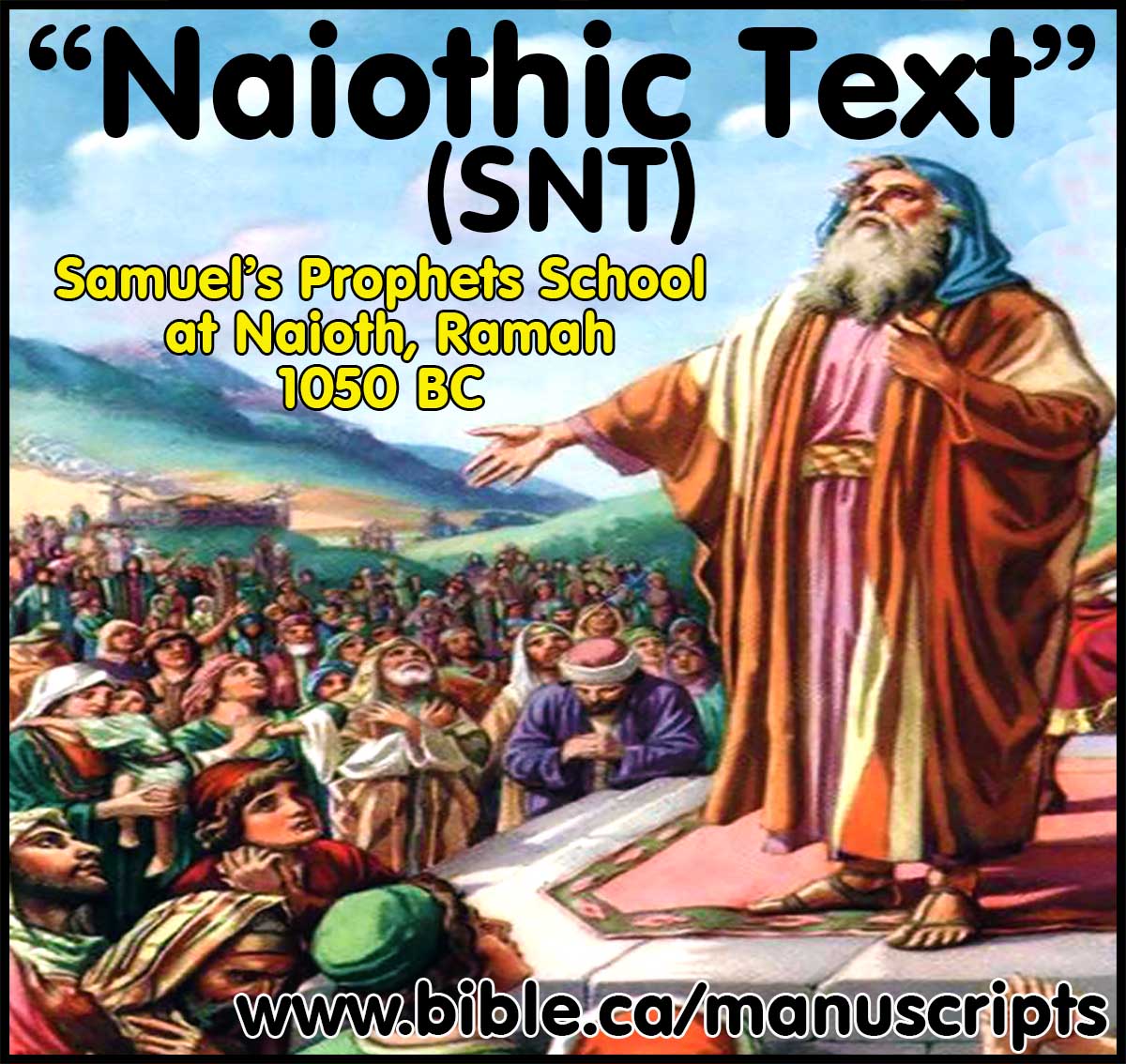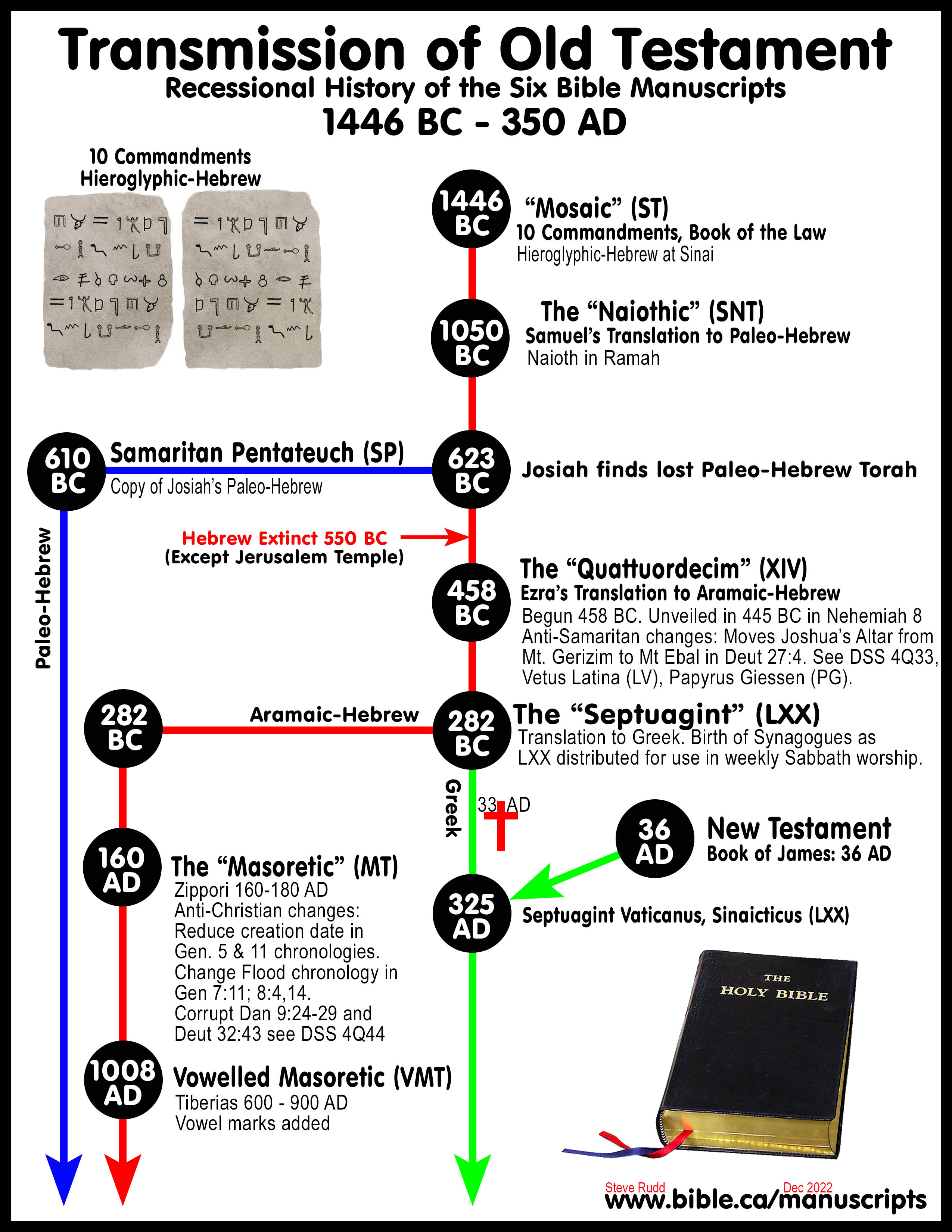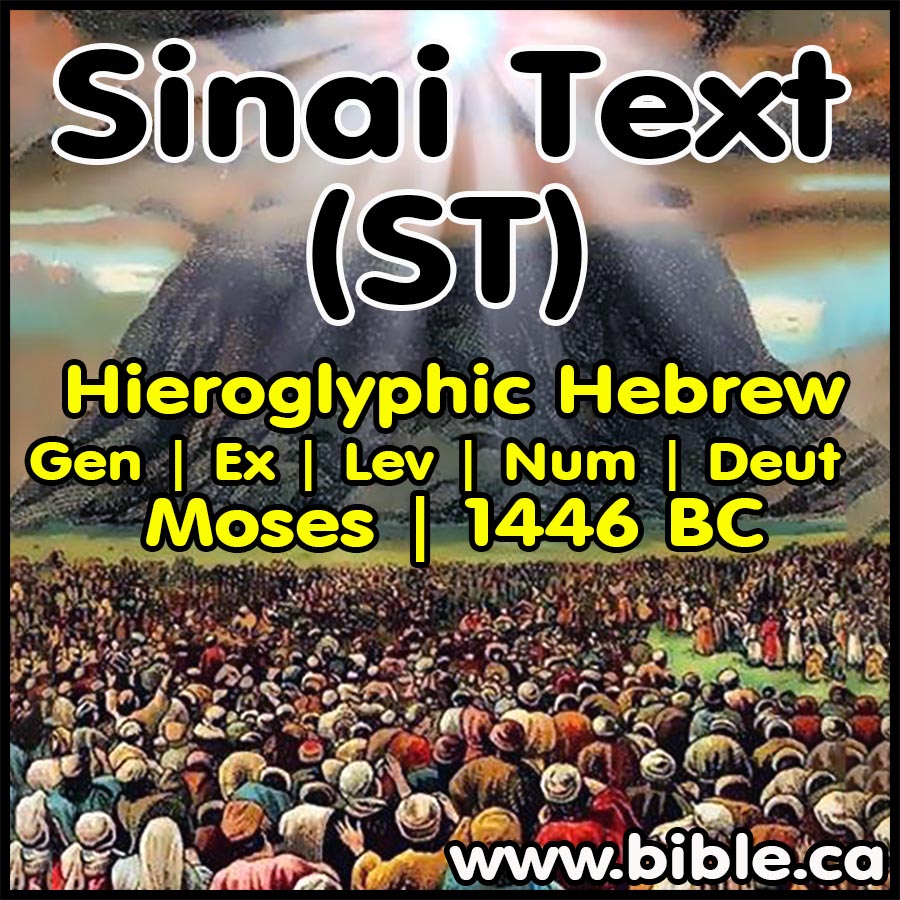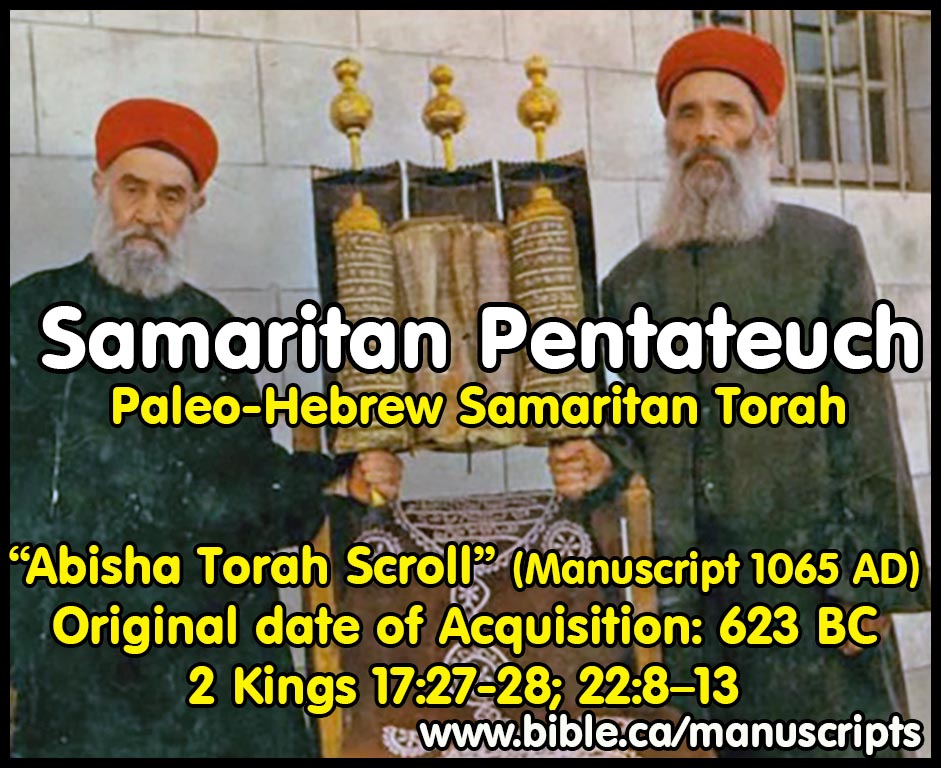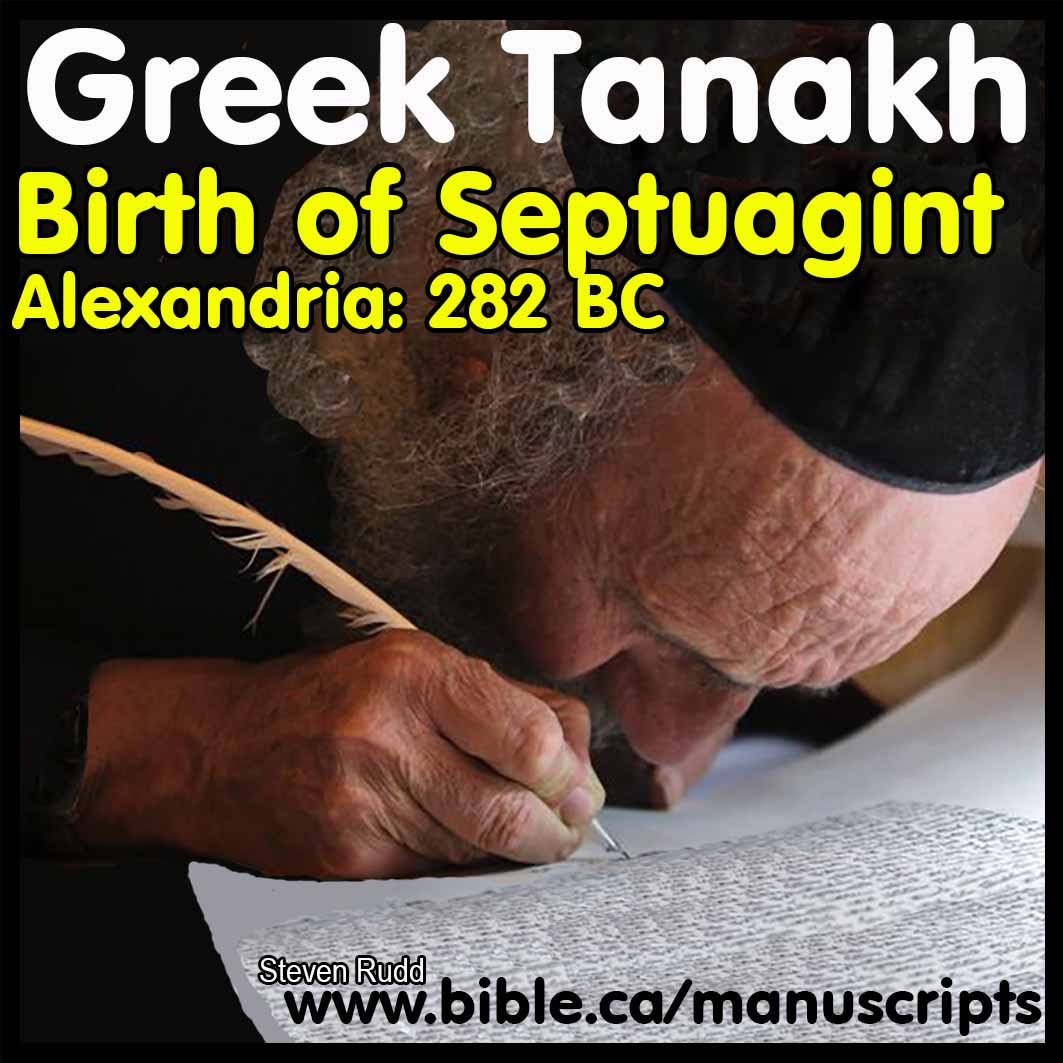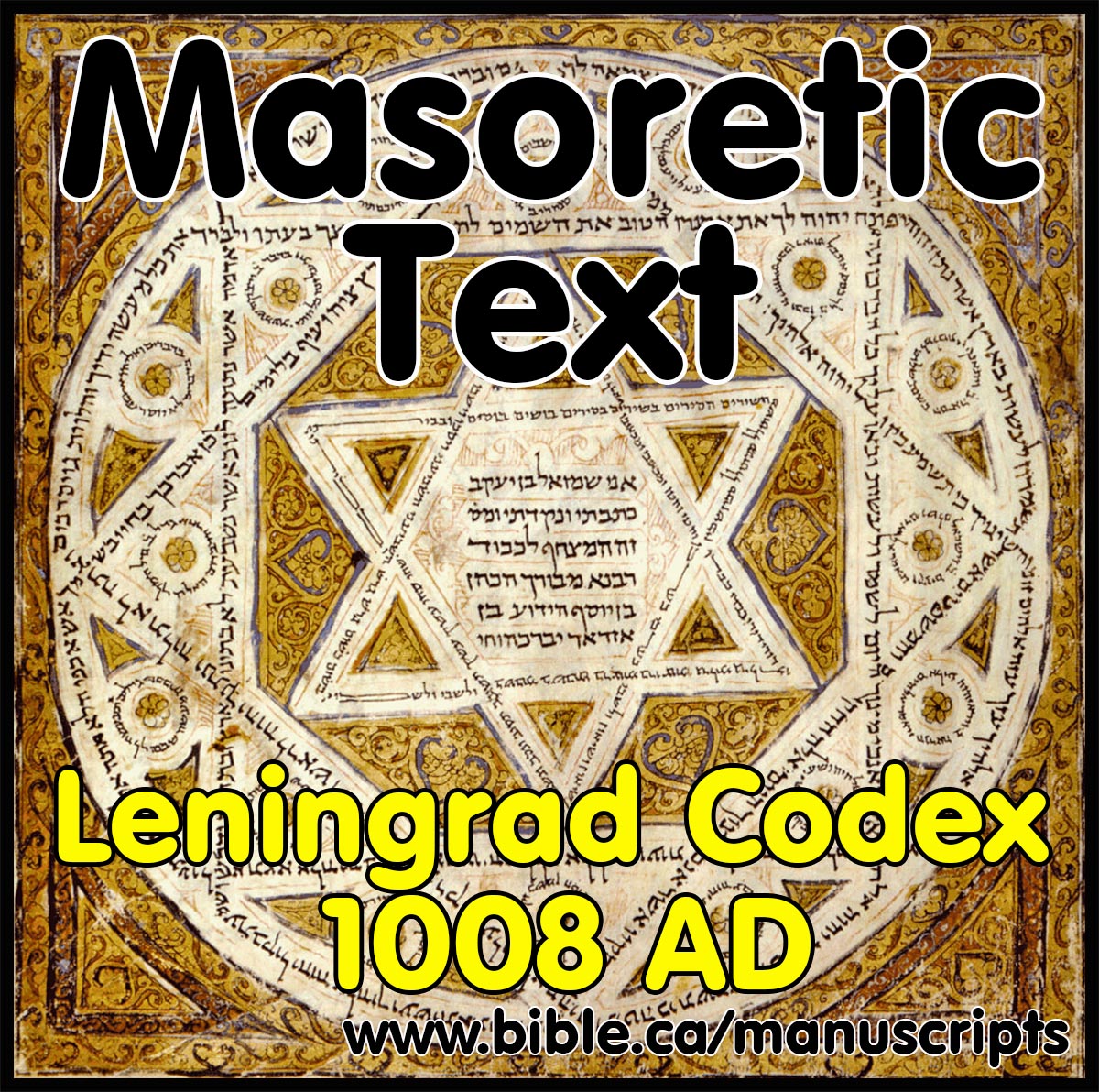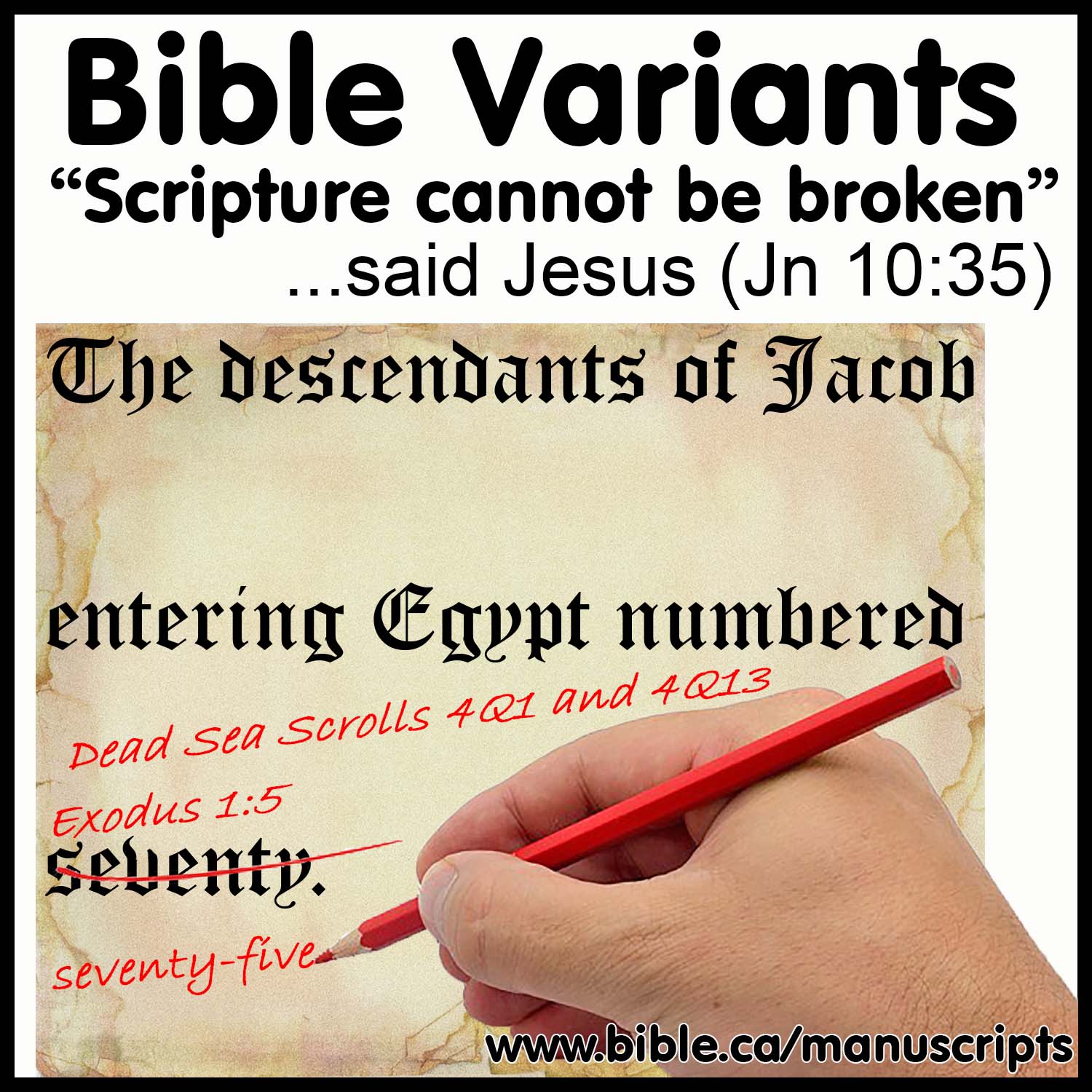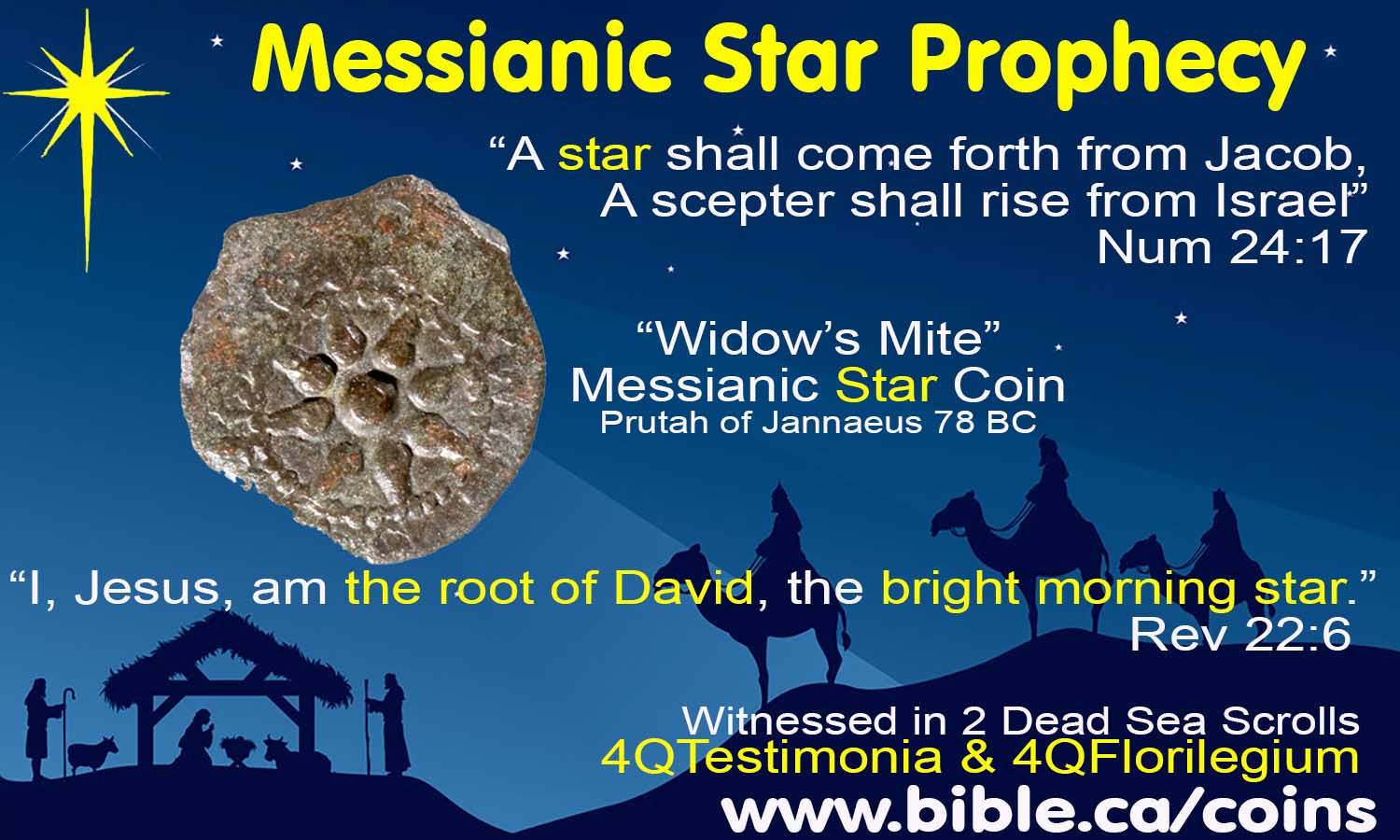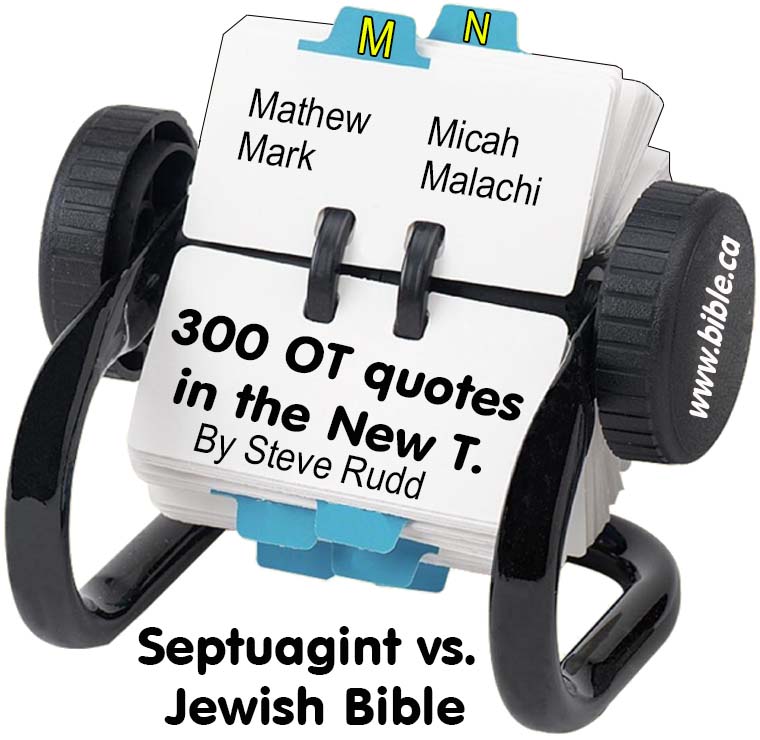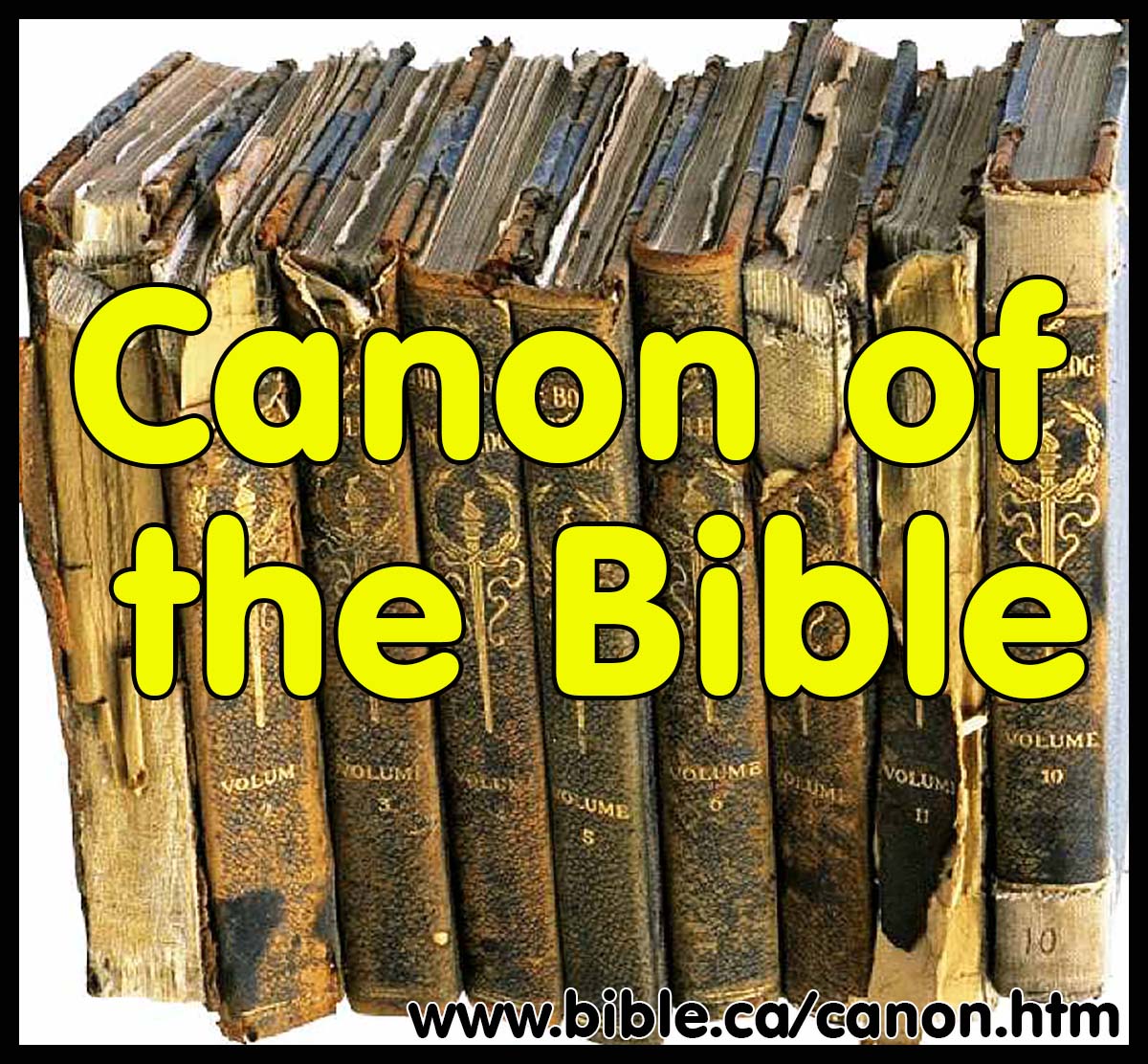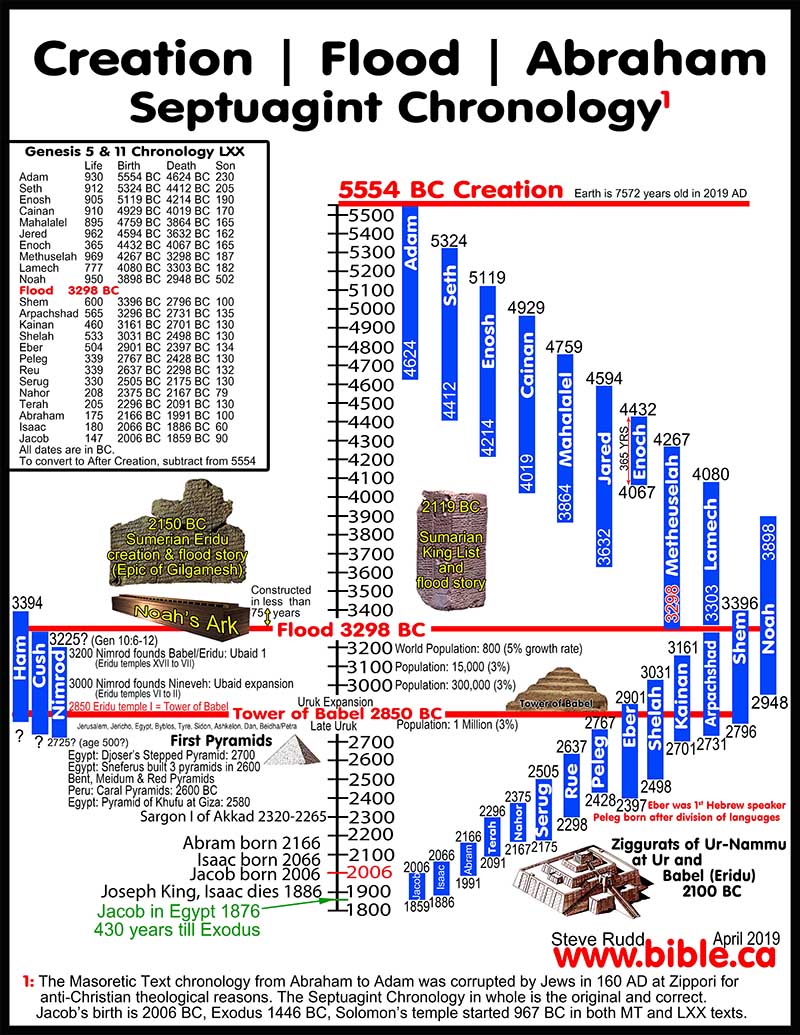|
Samuel’s “Naiothic Text” (SNT) Samuel’s Prophets school at Naioth, Ramah 1050 BC Torah Translation from Hieroglyphic Hebrew into Paleo-Hebrew “Ezra the priest, the scribe of the law of the God of heaven” (Ezra 7:12) "Scripture cannot be broken" (Jesus, John 10:35) Steve Rudd 1017 |
|
See also: 1. 6 Old Testament Manuscripts 2. Origin of the 4 Hebrew scripts used by Jews and in the bible 3. Book of Law in Hieroglyphic Hebrew alphabet script
|
Introduction:
1. The Sinai Text (ST) is the original autograph copy of the Torah (Gen-Deut) written by Moses in 1446 BC at Mt. Sinai
a. See also: Origin of the 4 Hebrew scripts used by Jews and in the bible
b. See also: 6 Old Testament Manuscripts
c. See also: book of Law in Hieroglyphic Hebrew alphabet script
2. The
alphabet used at Mt. Sinai was not Paleo-Hebrew but Hieroglyphic Hebrew
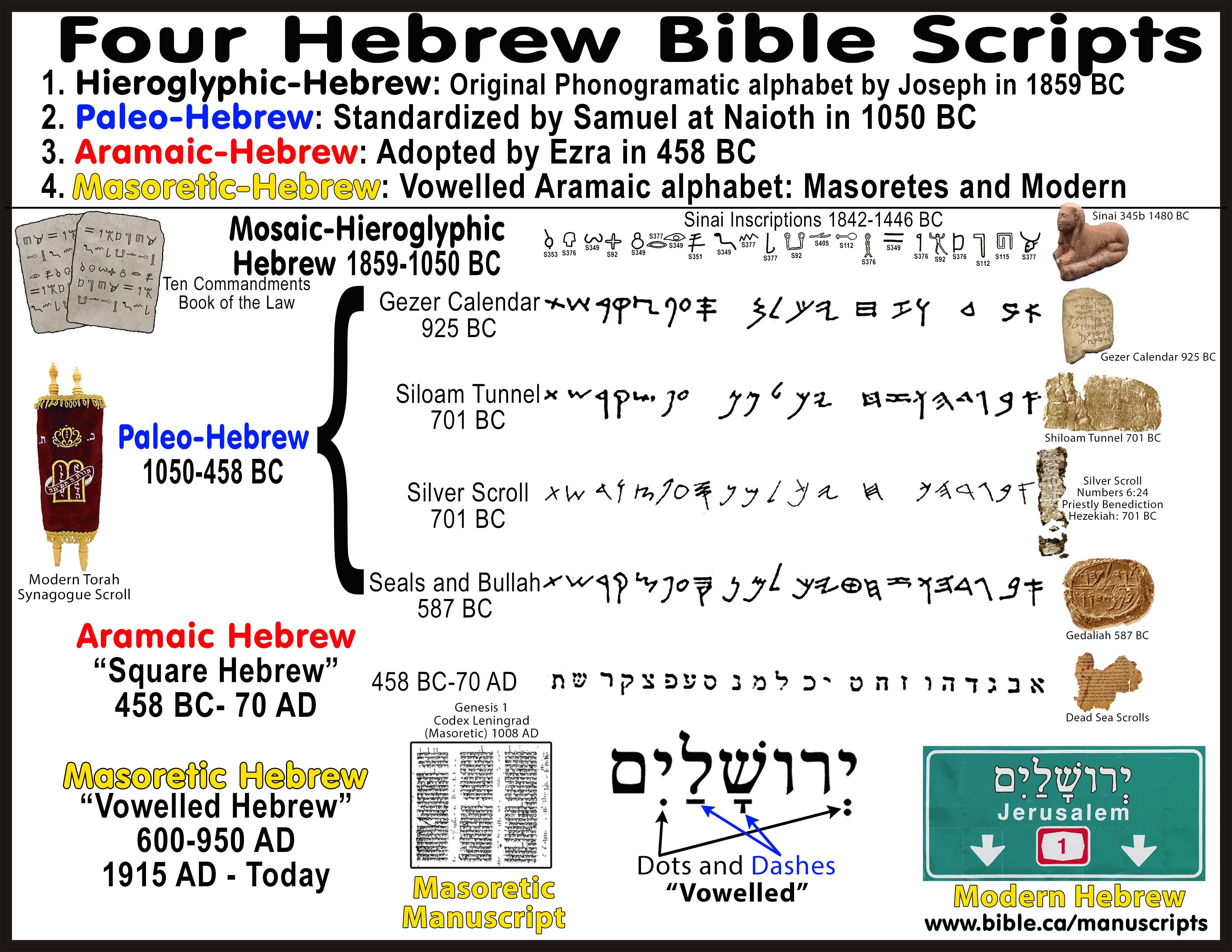
I. The following religious texts were written in Hieroglyphic Hebrew in 1446-1406 BC
1. Proof that Moses wrote the Torah:
a. (Gen – Deut): Jesus calls Genesis “the book of Moses”: Mark 12:26–27; Matthew 22:24
b. Specific quotations from the Torah attributed to Moses: Mark 10:3–9; Deut 24:1-4
c. The “book of the Law” that was placed beside the ark: Deuteronomy 31:26
2. The ten commandments by the finger of God.
a. The Ten commandments were placed inside the Ark: Deuteronomy 10:2
b.
Below is an example of how the 10 Commandments would look in
Hieroglyphic Hebrew script:
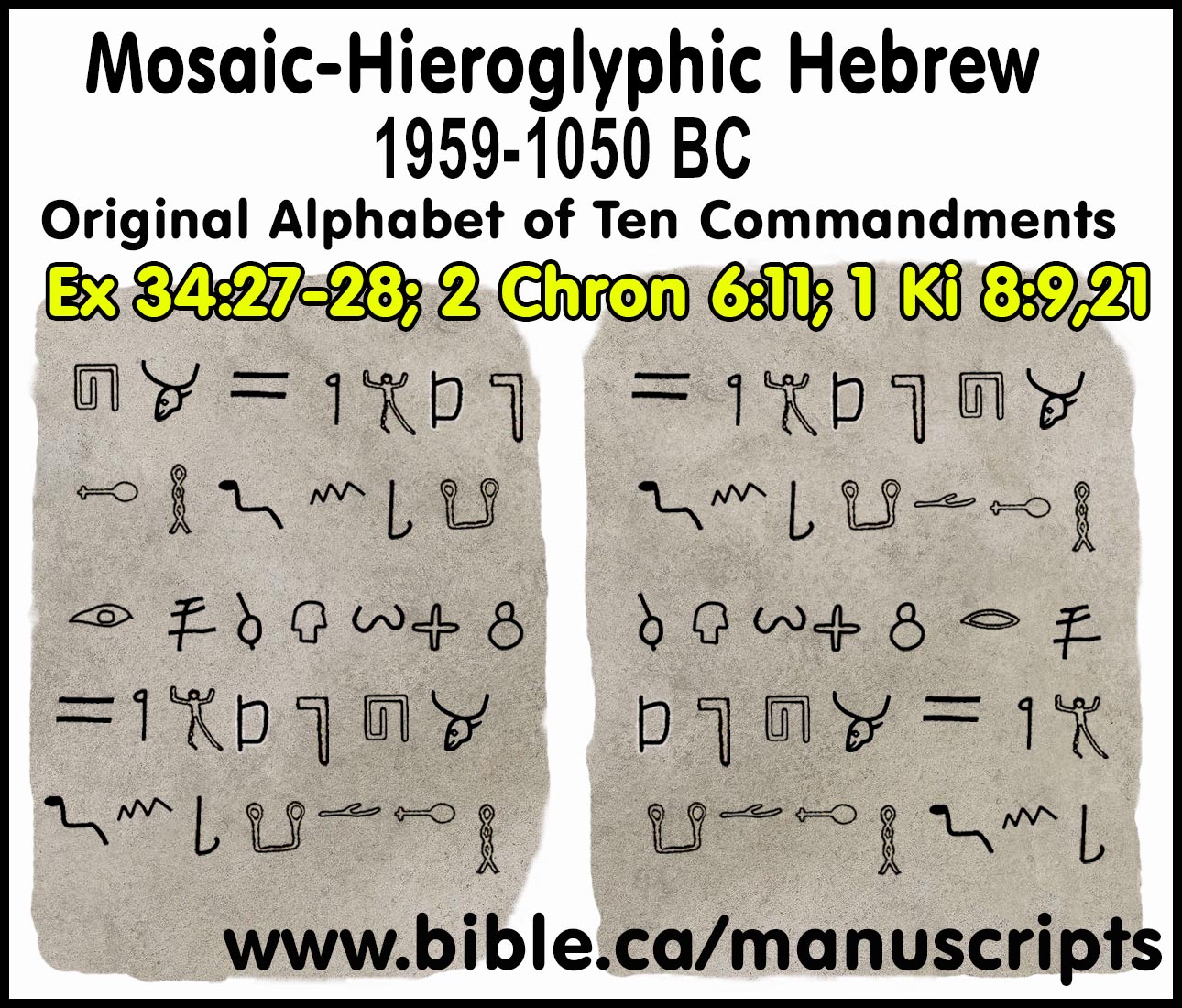
II. Samuel wrote Joshua:
1. Content of Joshua dates to a much later period after Joshua died in 1356 BC:
a. “To this day” references indicate a period long after the events described in Joshua. But all three references are dated to 1406 when Joshua was about 60. If Joshua wrote the book of Joshua when he was 120 in 1356 BC, these references do fit the context.
i. 1406 BC: "Then Joshua set up twelve stones in the middle of the Jordan at the place where the feet of the priests who carried the ark of the covenant were standing, and they are there to this day." (Joshua 4:9)
ii. 1406 BC: "Then the Lord said to Joshua, “Today I have rolled away the reproach of Egypt from you.” So the name of that place is called Gilgal to this day." (Joshua 5:9)
iii. 1406 BC: "They raised over him a great heap of stones that stands to this day, and the Lord turned from the fierceness of His anger. Therefore the name of that place has been called the valley of Achor to this day." (Joshua 7:26)
iv. 1401 BC: "Therefore, Hebron became the inheritance of Caleb the son of Jephunneh the Kenizzite until this day, because he followed the Lord God of Israel fully." (Joshua 14:14)
b. It may have been Samuel the prophet who updated the text by adding his own editorial note.
2. The book of Jashar:
a. References to the book of Jashar:
i. 1405 BC: "So the sun stood still, and the moon stopped, Until the nation avenged themselves of their enemies. Is it not written in the book of Jashar? And the sun stopped in the middle of the sky and did not hasten to go down for about a whole day." (Joshua 10:13)
ii. 1010 BC: "Then David chanted with this lament over Saul and Jonathan his son, and he told them to teach the sons of Judah the song of the bow; behold, it is written in the book of Jashar." (2 Samuel 1:17–18)
b. The book of Jashar may provide the most compelling evidence that Samuel wrote Joshua and NOT Joshua himself.
i. The book of Jashar could be a diary book of events begun by Jashar but continued long after he died.
ii. The book of Jashar could have been written at the time of Samuel that recorded both events.
3. The record of Joshua’s death and events years afterwards: "Israel served the Lord all the days of Joshua and all the days of the elders who survived Joshua, and had known all the deeds of the Lord which He had done for Israel." (Joshua 24:31)
4. The conquest of Dan of Leshem/Laish in 1340 BC:
a. "The territory of the sons of Dan proceeded beyond them; for the sons of Dan went up and fought with Leshem and captured it. Then they struck it with the edge of the sword and possessed it and settled in it; and they called Leshem Dan after the name of Dan their father." (Joshua 19:47)
b. "In those days there was no king of Israel; and in those days the tribe of the Danites was seeking an inheritance for themselves to live in, for until that day an inheritance had not been allotted to them as a possession among the tribes of Israel." (Judges 18:1)
c. "Then the five men who went to spy out the country of Laish said to their kinsmen, “Do you know that there are in these houses an ephod and household idols and a graven image and a molten image? Now therefore, consider what you should do.”" (Judges 18:14)
d. See also: Jeroboam inherits the pagan Danite altar
5. The evidence is compelling but not conclusive that Samuel wrote Joshua.
a. However when you factor in Samuel’s work in translating the Torah from Hieroglyphic-Hebrew into Paleo-Hebrew, it becomes logical that Samuel wrote Joshua.
b. If Samuel wrote Joshua, it was the first Bible book written in Paleo-Hebrew. Perhaps also, Samuel added the “to this day” statements found three times in the text.
c. Joshua wrote Joshua (in Hieroglyphic-Hebrew), Samuel still translated it into Paleo-Hebrew.
III. Ramah: Samuel’s ancestral home town
1. Ramah is identified as El Ram:
a. It was excavated as a result of the modern Israeli security wall that separates and protects Israel from the Arabs who occupy Israeli land.
b. It is situated on a strait line, about halfway between Gibeon (El Jib) and Geba (El-Jaba).
2. History of Ramah in the Bible:
a. Ramah was one of the towns given to Benjamin by Joshua: Josh 18:25
b. In 1290 BC, Ramah was one of the two destination choices by the Levite priest whose run-away wife was found dead outside the door in the morning at “sodomite” Gibeah of Benjamin (later known as Gibeah of Saul) Judges 19:13
c. Deborah judged Israel under a tree between Bethel and Ramah: Judges 4:5
d. Ramah was the home town of Hannah and Elkanah where Samuel was born: 1 Samuel 1:19
e. Samuel judged Israel from Ramah and built an altar there: 1 Samuel 7:17
f. Israel assembled at Ramah to demand Samuel give them a king: 1 Samuel 8:4
g. In 1018 BC, David fled Saul to Ramah and stayed in “Naioth”: 1 Samuel 19:18
h. Samuel was buried in Ramah, after which David visited the tomb city of Kadesh Barnea at Petra, in the wilderness of Paran: 1 Samuel 25:1
i. "Baasha king of Israel went up against Judah and fortified Ramah in order to prevent anyone from going out or coming in to Asa king of Judah." (1 Kings 15:17)
j. "Thus says the Lord, “A voice is heard in Ramah, Lamentation and bitter weeping. Rachel is weeping for her children; She refuses to be comforted for her children, Because they are no more.”" (Jeremiah 31:15)
k. "The word which came to Jeremiah from the Lord after Nebuzaradan captain of the bodyguard had released him from Ramah, when he had taken him bound in chains among all the exiles of Jerusalem and Judah who were being exiled to Babylon." (Jeremiah 40:1)
IV. Naioth, Ramah: Samuel’s Prophet’s School
1. Naioth of commonly misidentified as being at Nebi Samuel one Km west of Gibeon.
a. There are no Bronze or Iron age remains found there.
b.
The archeological ruins are from Crusader, Islamic and Byzantine
periods.

2. Passages that describe Naioth:
a. Naioth is only found in one passage at the time David was fleeing from Saul.
b. It seems Naioth is a prophets school or commune or residents of prophets and teachers in Israel in 1018 BC.
c. "Now David fled and escaped and came to Samuel at Ramah, and told him all that Saul had done to him. And he and Samuel went and stayed in Naioth. It was told Saul, saying, “Behold, David is at Naioth in Ramah.” Then Saul sent messengers to take David, but when they saw the company of the prophets prophesying, with Samuel standing and presiding over them, the Spirit of God came upon the messengers of Saul; and they also prophesied. When it was told Saul, he sent other messengers, and they also prophesied. So Saul sent messengers again the third time, and they also prophesied. Then he himself went to Ramah and came as far as the large well that is in Secu; and he asked and said, “Where are Samuel and David?” And someone said, “Behold, they are at Naioth in Ramah.” He proceeded there to Naioth in Ramah; and the Spirit of God came upon him also, so that he went along prophesying continually until he came to Naioth in Ramah. He also stripped off his clothes, and he too prophesied before Samuel and lay down naked all that day and all that night. Therefore they say, “Is Saul also among the prophets?” Then David fled from Naioth in Ramah, and came and said to Jonathan, “What have I done? What is my iniquity? And what is my sin before your father, that he is seeking my life?”" (1 Samuel 19:18–20:1)
3. Based upon etymology and a Jewish translation in the Targum of Jonathan, there is a strong case to be made that Naioth was a prophets school and residence headed by Samuel the prophet. Commentaries that describe Naioth as a preacher’s school:
a. “Samuel’s immediate departure with David for Naioth, i.e., “the dwellings,” probably indicates that the prophet regarded that place as safer refuge than his own house. These “dwellings” were like apartments where the sons of the prophets lived. The Targum renders Naioth as “house of instruction,” i.e., a theological school.” (The College Press NIV Commentary: 1 and 2 Samuel, 1 Samuel 19:18, 2000 AD)
b. “Of greater importance in discussing the place Naioth itself is the question of the meaning of the word. As our preliminary definition indicates, Naioth is said to be “in Ramah” (1 Sam 19:19, 22, and 23 [twice]). In addition, Saul’s messengers are sent to Ramah, not to Naioth (1 Sam 19:22). Because of this, early scholars tended to identify Naioth as a locality within Ramah (Driver NHT, 159). Another view is based on the alternate spelling given in the MT The text has the consonants in the order nwyt while the marginal note (the qere) suggests that nywt is to be preferred. The RSV follows this suggestion in rendering the place as “Naioth.” Following the Aramaic translation of the OT, the Targum, Morton (IDB 3: 500) and others (see the comments in NHT, 158–59) propose understanding the name to refer to a “house of instruction”—a prophetic school within Ramah. Morton (IDB 3: 500) cites 2 Kgs 6:1–7 as evidence for this type of prophetic school. More recent study has given some nuance to this suggestion. A. Malamat (1962: 146) notes in texts from Mari an Akkadian term for “encampment” or pasture settlement (nāwum) which has several related words in Hebrew, one of which is nāyôt. Malamat (1962: 146) thinks it likely that these kinds of settlements on the outskirts of a town housed prophetic fraternities.” (ABD, Naioth)
c. “Targum Jonathan renders the word as the phrase “house of learning” (beth ʾulfanaʾ בֶּית אֻלפָנָא)” (The New Interpreter’s Dictionary of the Bible, Naioth, 2009 AD)
d. “Something like a “school of the prophets” was located at Naioth under the leadership of Samuel (19:20). David fled there apparently for refuge, and Saul sent messengers three times to capture him. On each occasion the messengers came under the influence of the Spirit and “prophesied.” Finally Saul himself went to Naioth; the Spirit of God also came upon him, and he “prophesied,” which gave rise to the saying, “Is Saul also among the prophets?” (v 24). Because of the kethibh (which has support of LXX A), some would emend to nāwôṯ, “pastures,” but this hardly fits the picture as set forth in this passage” (ISBE, Naioth, 1979 AD)
Conclusion:
1. Samuel was the only dominant figure from the destruction of Shiloh in 1094 BC down to his death in 1014 BC
a. Samuel ran a prophet’s school at Ramah.
b. Archeology shows that the use of Hieroglyphic Hebrew was replaced by Paleo-Hebrew during the Iron 1 age (1100-1000 BC)
c. Samuel was the only dominant prophet and the only candidate for making this change in Bible manuscript text.
d. Samuel around 1050 BC translated the Hieroglyphic Hebrew into Paleo-Hebrew at Naioth, Ramah.
2. The Torah, the Ten Commandments and the book of Joshua (if Joshua wrote it) were written in Hieroglyphic Hebrew alphabet.
a. There are no Bible manuscripts or even a single fragment known to exist of any Bible text written in Hieroglyphic Hebrew.
b. We have the Samaritan Pentateuch Torah written in Paleo-Hebrew
|
Six Manuscripts of the Old Testament |
|||||
|
Name |
Date |
Authors |
Place |
Content |
Language |
|
Mosaic (ST) |
1446 BC |
Moses |
Sinai |
Book of the Law, Torah |
Hieroglyphic Hebrew |
|
Naiothic (SNT) |
1050 BC |
Samuel |
Naioth, Ramah |
Torah, Joshua |
Paleo-Hebrew |
|
Samaritan Pentateuch (SP) |
623/610 BC |
Samuel |
Naioth, Ramah |
Torah (copy from Josiah) |
Paleo-Hebrew |
|
Quattuordecim (XIV) |
458-445 BC |
Ezra “the 14” |
Jerusalem |
Tanakh, (Except Neh., Mal.) |
Aramaic-Hebrew |
|
Septuagint (LXX) |
282 BC |
“the 70” |
Alexandria |
Tanakh |
Greek |
|
Masoretic (MT) |
160 AD |
Rabbi Yose ben Halafta |
Zippori |
Tanakh |
Aramaic-Hebrew |
|
The Septuagint LXX “Scripture Cannot Be Broken” |
|||||
|
Start Here: Master Introduction and Index |
|||||
|
Six Bible Manuscripts |
|||||
|
1446 BC Sinai Text (ST) |
1050 BC Samuel’s Text (SNT) |
623 BC Samaritan (SP) |
458 BC Ezra’s Text (XIV) |
282 BC Septuagint (LXX) |
160 AD Masoretic (MT) |
|
Research Tools |
|||||
|
Steve Rudd, November 2017 AD: Contact the author for comments, input or corrections |
|||||
By Steve Rudd: November 2017: Contact the author for comments, input or corrections.
Go to: Main Bible Manuscripts Page
